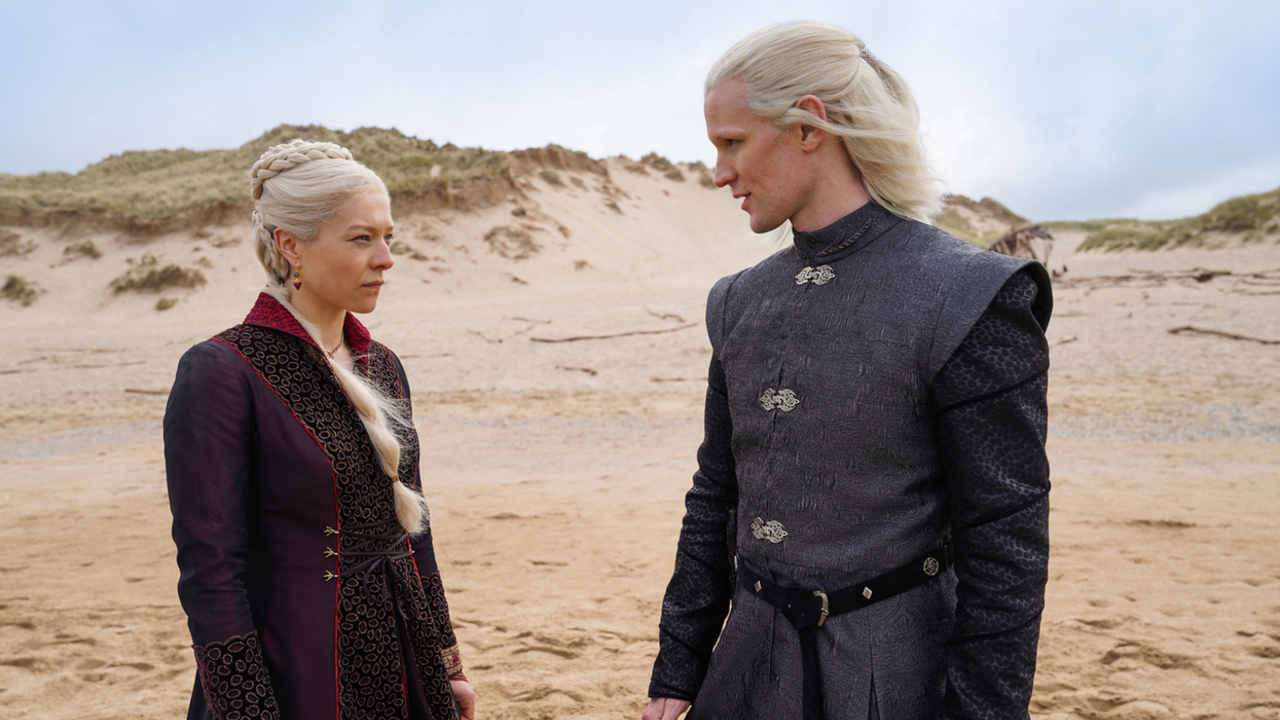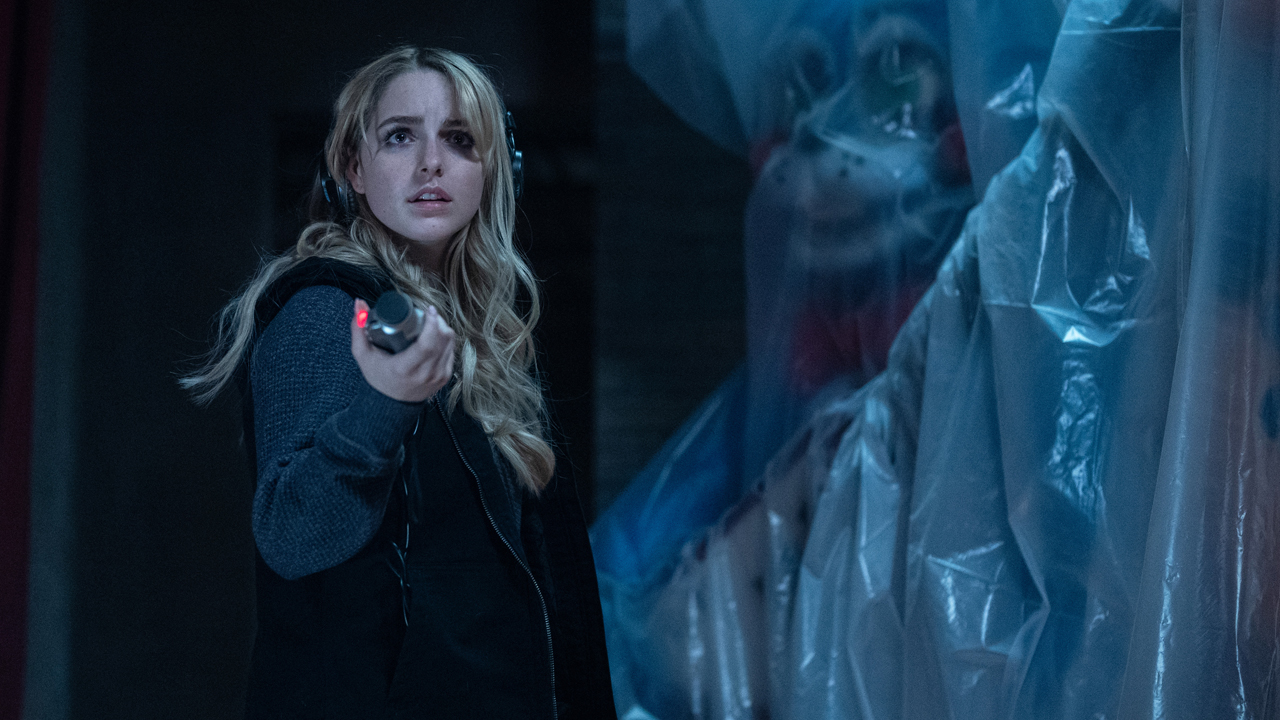Why House Of The Dragon's Targaryens Get Away With So Much Incest In Westeros, According To George R.R. Martin
Here's why the Targaryens get away with all the incest when the rest of Westeros is against it.

Thanks to a number of time jumps, House of the Dragon has already introduced several generations from the Targaryen family tree, and that number will undoubtedly continue growing. Of course, since this show is House of the Dragon and not House of the Wolves about the Starks or House of the Stags about the Baratheons or even House of the Lions about the Lannisters, many of the main Targaryen characters are related several times over. So, why does the Targaryen family get away with so much incest, which seems to go against the Westerosi Faith of the Seven? For that answer, we turn to author George R.R. Martin and what he wrote in Fire & Blood.
Marrying and procreating within the Targaryen family already had a long history before Rhaenyra and her uncle Daemon started making out in a King’s Landing brothel and Daemon asked Viserys for his niece's hand in marriage in House of the Dragon. King Viserys and first wife Aemma were cousins. Viserys and Daemon’s parents were siblings, and their parents were also siblings. Three of Rhaenyra’s four grandparents were Targaryens, and the dynasty in fact goes back to King Aegon I and his two sisters/wives. Rhaenyra is aunt by marriage and cousin by blood to Daemon’s children with Laena, while Daemon is uncle by marriage and great uncle by blood to Rhaenyra’s sons, who are claimed by Laenor.
The family tree has been keeping most of its branches to itself for so long that it may seem like the rest of the Seven Kingdoms had no problems with it, but Targaryen incest wasn’t always accepted in Westeros. It went against the Faith of the Seven, and even having dragons didn’t automatically dissuade people from wanting to rise up against them in the decades after Aegon conquered Westeros.
The solution came during the reign of King Jaehaerys I (seen briefly at the beginning of House of the Dragon) with the “Doctrine of Exceptionalism,” around fifty years after Aegon arrived to conquer Westeros and decades before the Game of Thrones spinoff picks up. In explaining the doctrine, George R.R. Martin's Fire & Blood initially details why the inbreeding is largely taboo in the Seven Kingdoms:
The basic tenet was simple. The Faith of the Seven had been born in the hills of Andalos of old, and had crossed the narrow sea with the Andals. The laws of the Seven, as laid down in sacred text and taught by the septas and septons in obedience to the Father of the Faithful, decreed that brother might not lie with sister, nor father with daughter, nor mother with son, that the fruits of such unions were abominations, loathsome in the eyes of the gods.
Basically, incest was not acceptable within the Faith of the Seven, and inbred children were seen as “abominations,” which certainly tracks with how reviled the relationship between Jaime and Cersei Lannister was in-universe (and among viewers) in Game of Thrones. Alicent Hightower, who seems to be one of the more pious characters of House of the Dragon (and hails from Oldtown, which is the home of the Faith), seemed disgusted when she referred to the “queer customs” of the Targaryens, even though she is wife and mother to members of that family.
Fire & Blood reveals why the Targaryens get away with it without prompting civil war by the time of House of the Dragon and Viserys, Daemon, and Rhaenyra, as Martin writes:
All this the Exceptionalists affirmed, but with this caveat: the Targaryens were different. Their roots were not in Andalos, but in Valyria of old, where different laws and traditions held sway. A man only had to look at them to know that they were not like other men; their eyes, their hair, their very bearing, all proclaimed their differences. And they flew dragons. They alone of all the men in the world had been given the power to tame those fearsome beasts, once the Doom had come to Valyria.
Quite simply, the Faith and King Jaehaerys agreed that the Targaryens were the exception to the rules against incest that applied to everybody who worshipped the Seven. Of course, the Doctrine of Exceptionalism from Fire & Blood also mentions some potentially problematic features of a true Targaryen: their looks set them apart from others (which is not the case with Rhaenyra’s three sons and their dark hair) and they have dragons (which was not the case for all of Daemon’s daughters and all of Alicent’s children for a time).
Your Daily Blend of Entertainment News
So, while the Targaryens’ incestuous practices may come across as “queer customs” to the rest of Westeros, followers of the Faith of the Seven actually have no reason – or at least grounds – to turn on the rulers because they tend to prefer marrying their own. Is it weird enough that I was a little surprised that HBO decided to adapt this chapter of George R.R. Martin’s saga, when it is jam-packed with relationships between relatives? Sure, but Martin covered all of his bases about explaining why the incest between the Targaryens goes unchallenged in House of the Dragon where the Lannister incest helped tear the realm apart in Game of Thrones.
See what’s next for the Targaryens with new episodes of House of the Dragon on Sundays at 9 p.m. ET on HBO or streaming with an HBO Max subscription. After all the times that King Viserys already seemed about to die, his time may be nearly up, which would undoubtedly lead to chaos unless Rhaenyra and Alicent somehow come to a peaceful agreement about the succession. That really isn’t too likely after the time jumps and recastings, not to mention the influence of Otto Hightower and Larys Strong on the queen, and a wild theory is circulating about the new Lord of Harrenhal.
A theory that isn’t so wild is that House of the Dragon isn’t finished with the marriages and betrothals within the Targaryen bloodline, although Fire & Blood readers can guess that the show is probably going to slow down on the time jumps sooner rather than later. A second season is already on the way, so it’s safe to say that Season 1 will end on a note to set up what comes next.
Unlike Game of Thrones as an adaptation of George R.R. Martin’s unfinished A Song of Ice and Fire novel saga, this era of the Targaryen history has already been finished in Fire & Blood, so House of the Dragon will be able to follow the source material from beginning to end… even though changes (such as Laena’s death) have already been made. Stay tuned to see what comes next!

Laura turned a lifelong love of television into a valid reason to write and think about TV on a daily basis. She's not a doctor, lawyer, or detective, but watches a lot of them in primetime. CinemaBlend's resident expert and interviewer for One Chicago, the galaxy far, far away, and a variety of other primetime television. Will not time travel and can cite multiple TV shows to explain why. She does, however, want to believe that she can sneak references to The X-Files into daily conversation (and author bios).
